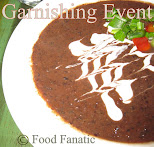 Parantha is the staple diet of North Indians. In a typical North Indian home, Parantha accompanied with some cooked vegetables is what makes lunch and dinner. Parantha is nothing but Indian bread and is best enjoyed fresh. Paranthas can be stuffed with potato, raddish, cauliflower or be plain and eaten with cooked vegetables.
Parantha is the staple diet of North Indians. In a typical North Indian home, Parantha accompanied with some cooked vegetables is what makes lunch and dinner. Parantha is nothing but Indian bread and is best enjoyed fresh. Paranthas can be stuffed with potato, raddish, cauliflower or be plain and eaten with cooked vegetables.Here is what differentiates Parantha with any other type of Indian bread:
- Parantha is cooked with oil. (Roti is cooked without oil)
- It is made of 100% whole wheat.
- Paranthas are usually triangular in shape and bigger in size. (Roti is round)
- While rolling a parantha, you add a few drops of oil, fold it to form a traingle, then flatten it with a rolling pin.
- The dough for parantha is neither too hard nor too soft. (The dough for poori is hard).
- Paranthas are not supposed to be incredibly thin or thick. However, thickness is a matter of personal choice.
No preparation required. Serves 4.
Ingredients:
1. 3 cups Whole wheat (aata)
2. 3-4 tablespoons oil
3. 1 teaspoon salt
4. Water
Instructions:
1. Add 1 to 4 in a big bowl and knead to make a dough. Add sufficient amount of water such that the dough is neither too hard nor too soft.
Note: Ingredient 2 and 3 are optional but recommended. I have tried making parantha both with and without oil and salt. When I add salt and oil to the dough, I find the dough easier to roll and give shape. Also, the parantha turns out softer and tastier.
2. Make small balls out of the dough by rolling it between your palms.

3. Using a rolling pin, flatten the ball and give it your desired shape. Ideally, I add a few drops of oil, fold it to form a triangle then flatten it with a rolling pin. But this time I decided to keep it round. I didn't add oil while rolling because I had already added a few drops in the dough.
Note:If the dough starts to stick to the counter, sprinkle some wheat on it.

4. On a heated pan, lay the uncooked parantha bread. When it turns golden brown, flip to the other side. You may like to spread a layer of olive oil on each side before flipping.
Serve hot with vegetables and Raita. Add a blob of butter if your diet so allows :).

Food trivia: To store the dough for later use, cover the dough in plastic wrap and keep it in the fridge. It's best to have it consumed within 3 days. To keep the cooked paranthas soft, wrap them in a cloth or paper towel and store them in a hot case or a plastic box. Put the parantha in the microwave for 30 seconds before eating.























2 comments:
Wow i too posted about this today....Roti look soft and yum.
aww. same pinch! great minds think alike ;) lol
Post a Comment